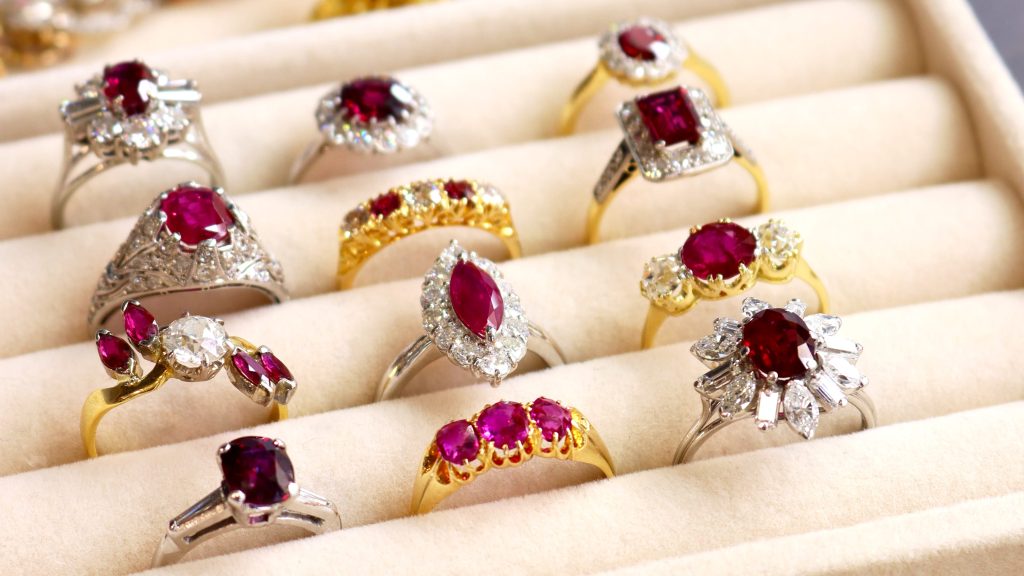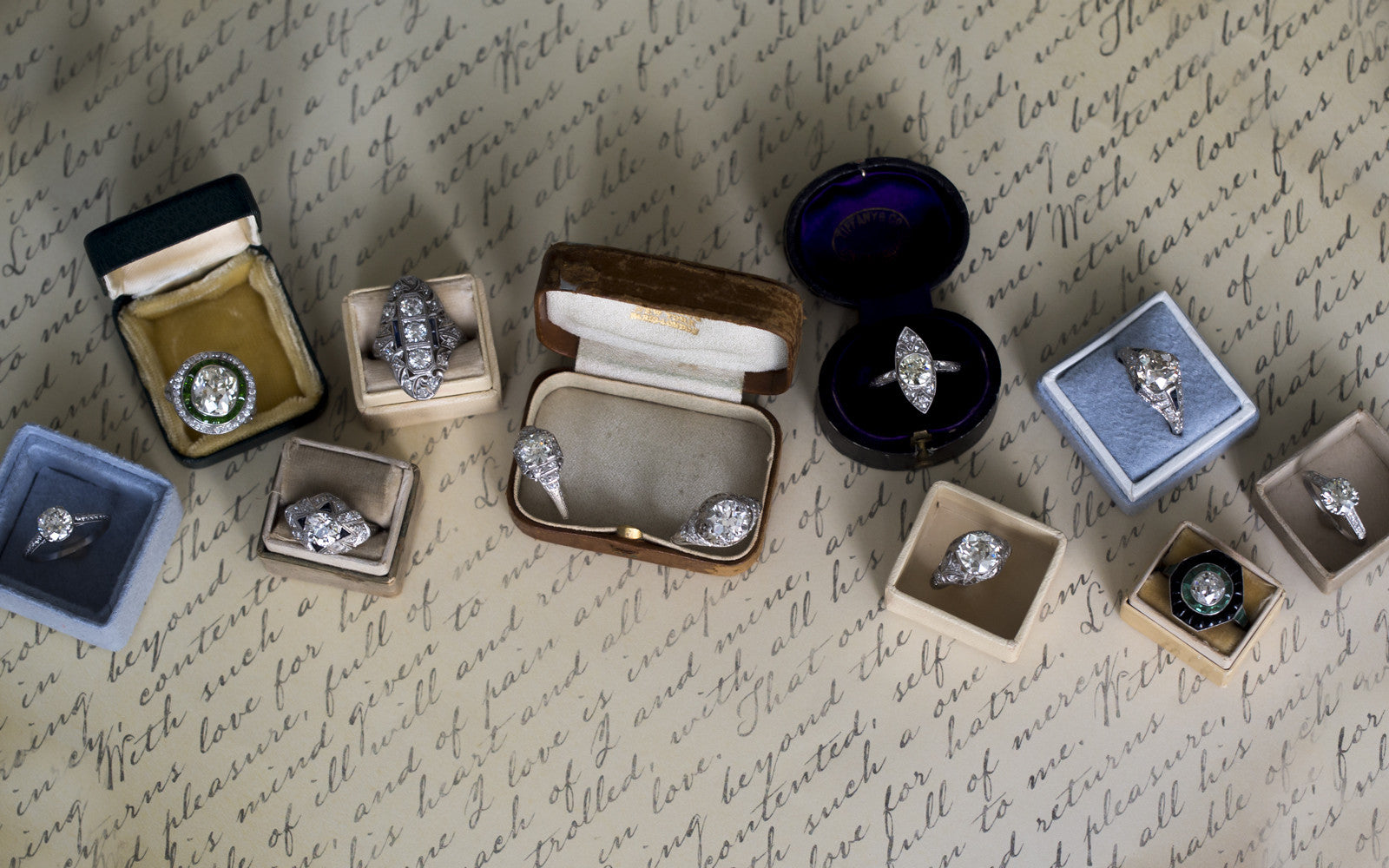Estate Jewelry: A Guide to Understanding and Appreciating Antique Jewelry Pieces
Estate Jewelry: A Guide to Understanding and Appreciating Antique Jewelry Pieces
Blog Article
Discover the Rich Background Behind Stunning Estate Precious Jewelry Collections
The exploration of estate jewelry collections offers an unique home window into history, disclosing the complex relationship between craftsmanship and cultural development. What secrets might these collections still hold?
The Origins of Estate Precious Jewelry
Just how did estate fashion jewelry concerned personify the abundant background and creativity of bygone periods? The origins of estate precious jewelry can be mapped back to various durations of workmanship, where jewelry was not simply an accessory yet a reflection of social values, technical innovations, and creative expressions. Each item narrates, commonly associated with the lives of their previous proprietors, encapsulating individual narratives along with historical contexts.
The term "estate precious jewelry" generally describes pre-owned pieces, usually from substantial periods such as Victorian, Art Nouveau, or Art Deco. These pieces were produced with thorough attention to detail, showcasing the ability of craftsmens that utilized materials like gold, silver, and priceless gems. Unlike contemporary fashion jewelry, estate items typically include unique styles that highlight the aesthetics of their time, therefore acting as substantial web links to the past.

Notable Design Eras
Throughout background, numerous significant style eras have dramatically affected the advancement of estate jewelry, each defined by unique styles, products, and social contexts. The Georgian era (1714-1837) noted the beginning of elaborate designs, often including nature-inspired themes and making use of products like gold, silver, and gems set in elaborate settings. Following this, the Victorian era (1837-1901) presented charming themes, with sentimental precious jewelry and cutting-edge methods such as using enamel and cameos.
The Art Nouveau duration (1890-1910) celebrated natural types and the beauty of nature, making use of materials like opals and pearls in flowing layouts. This was been successful by the Art Deco period (1920-1939), which accepted geometric patterns, bold shades, and elegant products such as platinum and diamonds, mirroring the modernist spirit of the time.
The Mid-Century Modern period (1940-1960) showcased streamlined layouts and the use of unusual materials, stressing minimalism and functionality. Each of these periods not only reflects the creative movements of their time however also encapsulates the social values and technological developments that formed jewelry layout, making them a fascinating topic for collectors and chroniclers alike.

Famous Estate Precious Jewelry Collections
The rich history of estate precious jewelry is beautifully exemplified by a number of prominent collections that showcase the creativity and workmanship from numerous design eras. One of one of the most renowned is the Cartier Collection, which mirrors the luxury and advancement of the legendary French jewelry expert. Pieces from this collection frequently feature splendid gems and complex layouts, highlighting the brand name's dedication to great workmanship.
An additional remarkable collection is the Duchess of Windsor's jewelry collection, which comprises several distinctive pieces, including the iconic "Windsor" bracelet. This collection not just exemplifies the elegance of the Art Deco period but also lugs an abundant narrative of love and loss, as it belonged to Wallis Simpson, that notoriously wed Edward VIII.
The collection of the late starlet Elizabeth Taylor likewise sticks out in the realm of estate fashion jewelry. With various pieces developed by popular jewelers like Bulgari and Cartier, her collection embodies glamour and refinement, emphasizing her individual style and affinity for unique gemstones.
These renowned estate precious jewelry collections offer as a testament to the enduring attraction of great fashion jewelry, offering insight right into the cultural and artistic motions that shaped their creation.
The Cultural Importance
Estate jewelry collections hold extensive cultural significance, mirroring not only the aesthetic worths of their particular eras yet likewise the historic and social contexts in which they were produced. Each item usually symbolizes the craftsmanship and imaginative patterns of its time, showcasing the advancement of style and technology in precious jewelry making.
In addition, these collections act as substantial links to social traditions and routines. Wedding bands and antique brooches may signify love and familial bonds, while pieces embellished with particular gems can represent regional check my source or social identifications. The products used-- whether gold, silver, or valuable rocks-- typically inform stories of trade, expedition, and the wide range accumulation of societies.
In addition, estate jewelry can function as historic artefacts, providing insights into the lives of individuals and the social standards they browsed. The means fashion jewelry was used and valued can disclose much about gender roles, condition, and individual expression within differing social landscapes. Thus, estate precious jewelry goes beyond mere ornamentation, functioning as an abundant story of human experience, virtuosity, and social heritage, inviting modern audiences to engage with the past in a significant method.
Caring for Your Estate Parts
Caring for estate fashion jewelry pieces requires a thoughtful technique to ensure their long life and maintain their special qualities. Always tidy estate fashion jewelry using a soft, lint-free fabric after each wear to remove oils and dust.
Storage space is equally vital; shop pieces independently in a fabric-lined box to avoid scraping and entangling. Think about using anti-tarnish bags or cloths for silver things, as this Learn More assists to reduce down the tainting procedure. Additionally, stay clear of exposing precious jewelry to extreme dampness, extreme temperature levels, or direct sunshine, which can negatively affect gems and metals.
Consulting a jeweler experienced in vintage or antique pieces can offer specialized care alternatives. By implementing these practices, collection agencies can maintain their estate jewelry's visual and historical value, making sure these items proceed to be cherished for generations to come.
Conclusion
Finally, the expedition of estate precious jewelry collections discloses a tapestry of creative expression and social relevance, mirroring explanation the worths and looks of numerous historic durations. Each item acts as a testament to extraordinary workmanship and the narratives of those who once owned them. Comprehending the beginnings, design eras, and noteworthy collections improves gratitude for these artifacts, stressing their duty in maintaining social heritage and encouraging ongoing stewardship and take care of these remarkable treasures.
The expedition of estate precious jewelry collections supplies an unique window right into background, disclosing the complex partnership between workmanship and cultural evolution. The beginnings of estate precious jewelry can be mapped back to numerous durations of craftsmanship, where fashion jewelry was not simply an accessory but a reflection of societal values, technical innovations, and artistic expressions.The term "estate precious jewelry" typically refers to pre-owned items, frequently from considerable ages such as Victorian, Art Nouveau, or Art Deco.The abundant background of estate precious jewelry is perfectly exemplified by numerous renowned collections that display the creativity and craftsmanship from various layout eras.In conclusion, the expedition of estate fashion jewelry collections discloses a tapestry of artistic expression and social importance, reflecting the values and aesthetic appeals of various historic durations.
Report this page